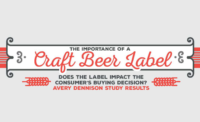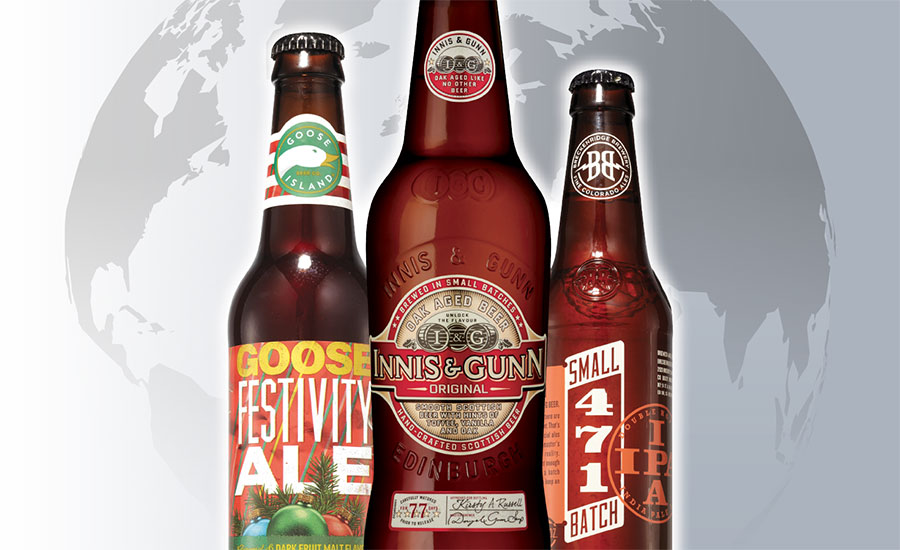Cover Story
Craft beer: the global movement
It’s all about the passion, storytelling and branding behind the craft.
















I couldn’t write a story about craft beer without talking about the people behind the segment. For the first time ever, I had the privilege of attending the Craft Brewers Conference last month in Washington, D.C. and got a behind-the-scenes look at craft brewing, the people behind the segment, and the businesses that are involved in the processing and packaging of this popular drink. Wow, it blew me away; the size of the industry is vast but the community of people felt small.
Collaborations, congratulations and comradery were evident throughout the halls as like-passioned people came together to celebrate this global movement. And it really is a global movement, with over 13,000 people at the conference and attendees from more than 50 countries. According to Barbara Fusco, sales & marketing director, Brewers Association, eight out of the last 10 years saw double digit growth in the segment.
According to the Brewers Association (brewersassociation.org), craft brewers sold $23.5 billion in 2016. That amounts to 21.9% of the $107 billion U.S. beer market. That’s up from 19% last year – and continued growth from the 10% that craft brewers held in 2012. But first, what is a craft brewer? The association’s definition is a brewer that is small, produces fewer than 6 million barrels of beer per year, is independent (less than 25% of the craft brewery is owned or controlled by an alcohol industry member that is not itself a craft brewer) and makes traditional beer (not malt beverages or cider).
It is a larger industry than even I thought, but it isn’t the size that shocked me most but the passion and love of the craft. Collaboration and passion unites all of the brewers to really grow the segment and deliver exceptional beer.
“Behind the success of a brand is the small, local brewery that offers a space for people to connect. People get into it not just to make money, but because it’s their passion,” says Fusco.
Branding makes all of the difference
One topic that I repeatedly heard from brewers, labeling folks, designers and general managers is how important branding is and how important it is that your brand and package tell a story to the consumer. As Fusco mentioned, there is so much spirit and passion behind each brand and so much individuality … the package is the perfect outlet for all of the spirit to come pouring out and grab the buyer. Why? Because the stories behind the craft breweries really resonate with people and it’s these stories that should be portrayed through the packaging and branding.
According to Barrett Brynestad, associate creative director/
designer for TDA Boulder (tdaboulder.com), the package should tell consumers as much as possible about the beer, from the occasion to taste profile and overall brand ethos.
“Consumers are looking to the breweries and the packaging to articulate how it tastes, why you brew beer and best reflect the brewery. This will turn everyone into an evangelist for the product,” says Brynestad.
Brynestad knows firsthand how strong branding can directly increase sales. He worked with Deschutes Brewery to redesign the brewery’s lineup of beer and the result was wildly successful, 40% increase in sales for two of its popular beers – Black Butte Porter and Obsidian Stout.
The brewery was in need of a new brand identity from constantly tweaking and updating its packaging over 30 years and with the problem that consumers knew two of its popular beers by name, but yet were not familiar with the brewery itself. The first priority was to flip that. It was almost a reintroduction of the brand – a brand that consumers may have had but didn’t necessarily know.
“We peeled back 30 years’ worth of layers to find out who the brewery is, who the people are, and to then align the brewery with who it was and ultimately convey that to the consumer,” says Brynestad.
Cities and stores are at this point over-saturated with beer choices and some brands are relying on gimmicks and noise to attract consumers, but Deschutes had a different approach. Its goal was always just to brew tasty beer, and the redesign was meant to reflect that thinking.
For the package itself the brand agency wanted to unify all of the SKUs in the lineup with keeping one-third of the package the same. Each has a large logo on the bottle’s neck, as well as the brewery name along the shoulder of the bottle; the beer flavor or variety is displayed below the brand logo and name.
The second priority was to create a profile and personality for each beer.
“We wanted each design to evoke a different feeling and occasion. Different colors are unique to each SKU and hint at the beer’s taste. All designs are unified but individual, and help each one stand out in the Deschutes family,” continues Brynestad.
How important is branding in the popular craft beer space?
“Of the upmost importance, especially if you are a smaller beer brand, you need to seriously invest in packaging. It’s the one area that goes the furthest to connect with consumers and build brand recognition, says Brynestad.
Package type and design
So what about the debate of cans versus bottles? I heard so much more about cans at the conference than bottles but bottles remain the dominant way that craft beer gets to the beer drinker, with 58% in market, and cans representing 12% (and 30% draft pours). That 12% though is a big increase from 2011 where cans only made up 2% of the market, according to the Brewers Association. A few of the breweries I spoke with – including Tin Roof Brewing out of Baton Rouge, LA – only can their beer, and always have. Brewers prefer the can’s light and oxygen-blocking abilities, as well as 360-degree canvas. While canning is certainly a strong growth area in craft beer, it isn’t exactly a new idea. Oskar Blues claims to be the original craft beer in a can when they started canning their Dale’s Pale Ale in 2002.
Cans or bottles, a great label goes a long way. I attended a session led by Avery Dennison (label.averydennison.com) at the conference, where labels and design were the topics. The panel, which comprised of staff from a brewery, a designer, a printer and Avery Dennison, discussed the importance of a cohesive branding strategy, how labels and printing can help and the various label types popular in the segment.
In the discussion, the topic of cans was brought up and the ability to lower cost with their use. Brewers can purchase fewer components than bottling to get the beer packaged. In addition, cans offer superior light-blocking properties, a 360-degree area versus a bottle’s traditional front and back canvas. But bottles offer benefits too, like a perceived premium quality and die cut label options with lots of tactile and aesthetic appeal (to read a case study about a brewer using pressure sensitive labels, go to page 19). Pressure sensitive labels (PSL) allow for die cut and shorter runs than cut and stack.
The session takeaway was that you want your package to be a premium look and feel to match the premium content of the beer inside. Consumer perception: A high value package means a high value beer.
According to Constantia Flexibles (cflex.com), the first time PSL was used in line on a beer product was 14 years ago. PSL had 0% market share in 2003 to nearly 50% today. Why the growth? Pressure sensitive technology is one of the lowest cost options. The operational benefits of pressure sensitive labels are also driving the expanded usage and further investments. They eliminate glue, set up time and change parts compared to paper labels, increasing throughput gains. They have better durability in the ice chest and the distribution system allows for brand recognition from beginning to end. In addition, shapes do not add cost and it is seamless to change from one size or shape to another.
PSL also allows for much more design flexibility because they eliminate proprietary bottles for each SKU and can be applied in line with filling, thus reducing inventory levels.
Packaging is what the consumer interacts with most and offers various touchpoints from the bottle or can itself to the secondary packaging and even multiple points on the bottle from the base to the neck. The quality of the beer can best be expressed through the branding and design of the package.
What’s makes the craft beer segment wildly successful is really the people – the brewers, the visionaries, and the consumers and beer enthusiasts that buy it. Craft beer is a global movement with strong and passionate people, creative storytelling and quality-driven beer. As one brewery staffer I spoke with from Canada explained, there is a will for the entire industry to succeed so everyone loves to share ideas, collaborate on beers and offer advice. They all could be considered competitors, but it isn’t that way. Everyone supports each other. After all, a rising tide lifts all boats.
Looking for a reprint of this article?
From high-res PDFs to custom plaques, order your copy today!
















